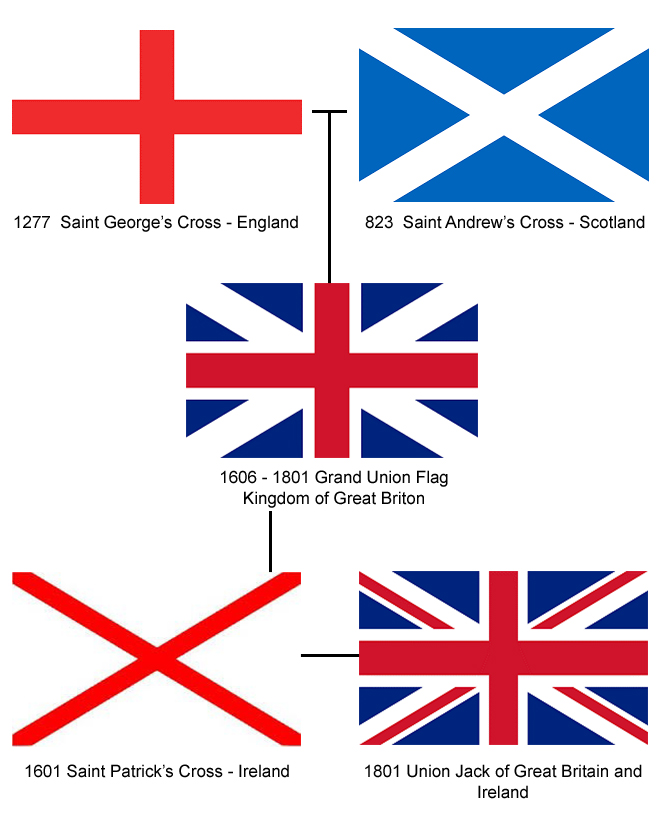The United Kingdom is full of tradition, from monarchy to fish and chips, from Guinness to folk songs, but come Thursday 18th September a tradition dating from 17th century might come to an end, when Scotland’s citizens take to polling stations to decide whether Scotland should remain part of the UK or go its separate way as an independent company.
If the people of Scotland vote ’Yes’ in Thursday’s referendum then the United Kingdom will be broken up and the flag, the great symbol of the union, is likely to receive a historic makeover minus the Scottish saltire.
A bit of History about the Union Jack Flag
The current Union Jack flag is a combination of a number of historical flags. Originally the flag started of as St. George’s red cross flag which dates back to 1270. Then in 1606, after Elizabeth 1st died and James 1st (James 6th of Scotland) succeeded to throne it marked the beginning of the union between England and Scotland. The two countries needed a new flag to represent the union, which resulted in the St Georges flag being placed onto the Scottish flag (see below). Then in 1801 when Northern Ireland joined the United Kingdoms of England and Scotland, the St Patricks flag of Ireland was added to flag (see below), which resulted in todays United Jack flag.

Why is the Welsh flag not included on the Union Jack?
The Welsh dragon is not included in the Union Jack because when the first union flag was created in 1606, Wales was already united with England from the 13th century. This mean that Wales was a sovereign state rather than a Kingdom and as a result could not be included in the Union of Kingdoms.
What will happen to the Union Jack if Scotland leave the UK?
At the moment, the future of the Union Jack is uncertain. Although the blue in the current union flag represents Scotland, perhaps the blue could represent the sea surrounding the United? Although that will then raise the question of why the Welsh dragon can’t then be included.
Could any of the below flags be the future Union Jack:






